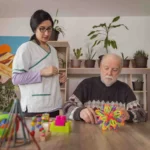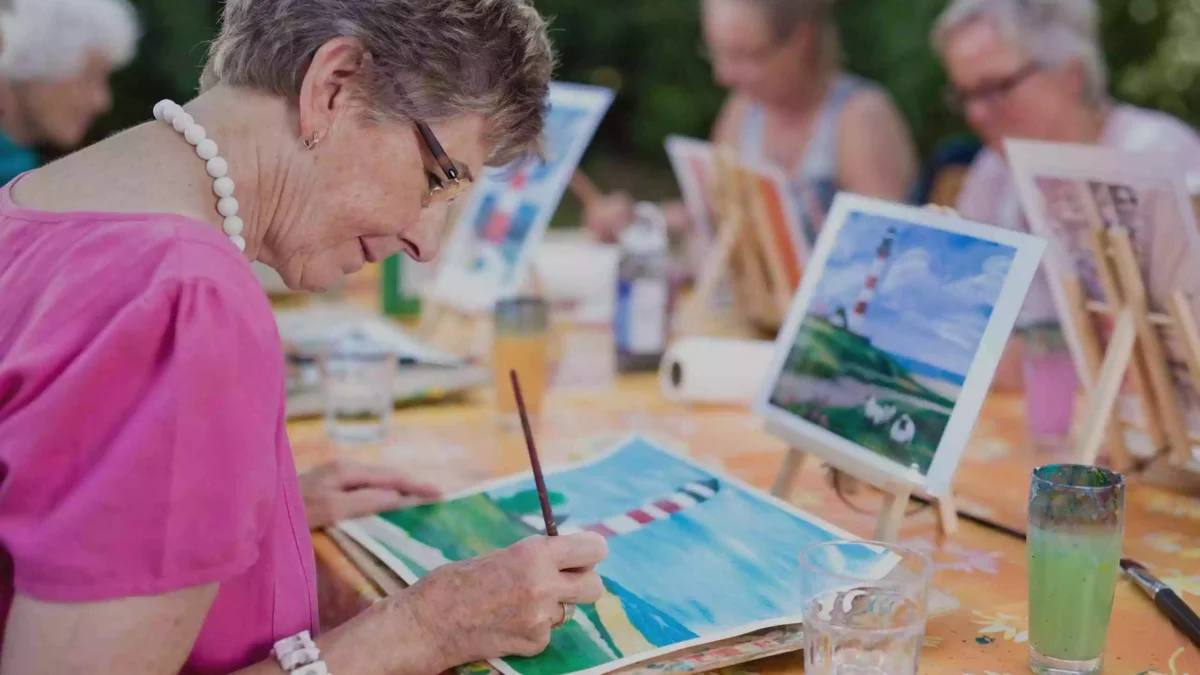
Brain Health for a Bright Future: Cognitive Exercises for Older Adults
June 14, 2025
Top Travel Destinations for Seniors Seeking Adventure
July 6, 2025Art therapy uses creative processes to promote emotional well-being. It helps individuals express feelings and manage mental health issues.
Art therapy combines artistic expression with psychological techniques to enhance mental health and emotional resilience. Through activities like painting, drawing, and sculpting, individuals can explore their emotions and gain insights into their inner experiences. This therapeutic approach is particularly beneficial for those who struggle to articulate their feelings verbally.
Art therapy fosters self-awareness, reduces stress, and improves overall emotional well-being. It serves as a non-verbal communication tool, providing a safe space for expression. By engaging in creative outlets, individuals can find new ways to cope with challenges, making art therapy a valuable resource for emotional healing and personal growth.
The Essence Of Art Therapy
Art therapy began in the early 20th century. Pioneers like Margaret Naumburg used art to help people. It started as a way to understand feelings. Over time, it became a respected therapy. Now, many people use art to heal. Art therapy helps people express emotions. It is useful for all ages.
Art therapy focuses on the creative process. It helps people explore their thoughts. Making art can reduce stress. It improves mental health. Different materials like paint, clay, and pencils are used. The process is more important than the final product. Therapists guide people through their art journey. Trust and safety are essential in sessions.
How Art Therapy Fosters Emotional Health
Art therapy helps people express feelings without words. It allows for the release of emotions. Many people find it easier to draw or paint their feelings. This can be especially helpful for those who struggle to talk about their emotions. Art provides a safe space to explore feelings. It can be a powerful way to communicate with others.
Creating art can change brain patterns. It can lower stress levels. Studies show that art boosts brain function. This includes areas that manage emotions. Art can increase dopamine, a feel-good brain chemical. This helps with mood regulation. Making art can also improve brain connections. This makes it easier to manage thoughts and feelings.
Artistic Modalities In Therapy
Painting and drawing help express feelings. Colors and shapes can show how someone feels inside. Bright colors may show happiness. Dark colors may show sadness. Drawing and painting can be calming. They can help relax the mind.
Working with clay can be soothing. Molding clay helps release tension. Sculpture allows people to shape their feelings. Creating shapes gives a sense of control. It can also be fun and messy.
Photography captures moments. Photos can show what words cannot. Taking pictures helps people see the world in new ways. Reviewing photos can help reflect on memories. It can also be a way to share stories.
Art Therapy In Practice
The therapy room is quiet and calm. Soft colors and gentle light fill the space. Art supplies are neatly arranged. Paints, brushes, and clay are within reach. The environment feels safe and welcoming. This place helps people feel relaxed and open. They feel free to express their feelings. The room is designed to be a sanctuary for creativity.
The art therapist guides the session. They help people choose their materials. They encourage people to express themselves. The therapist listens and observes. They do not judge the artwork. Their role is to support and understand. They help people find meaning in their art. This helps people heal and grow emotionally.
Who Can Benefit From Art Therapy?
Children, adults, and seniors facing emotional challenges can find solace in art therapy. This creative outlet fosters emotional well-being through self-expression and exploration.
Children And Art Therapy
Children often find it hard to express feelings with words. Art therapy helps them express emotions through drawing and painting. It boosts self-esteem and helps with anxiety. Children dealing with trauma can also benefit.
Support For Mental Health In Adults
Adults face many pressures in daily life. Art therapy provides a safe space to explore feelings. It helps with stress relief and coping with depression. Creating art can bring a sense of calm and focus.
Art Therapy With Elderly Patients
Elderly patients often feel isolated. Art therapy can enhance mood and reduce loneliness. It keeps the mind active and improves cognitive functions. Elderly people with dementia can also gain comfort through art.
Art Therapy Success Stories
Many people have found healing through art therapy. One young girl, Emma, used drawing to express her feelings. She felt better after each session. John, a war veteran, painted his experiences. This helped him deal with his trauma and nightmares. Sarah, a mother, created sculptures to show her grief. Art gave her a way to cope and move on.
Studies show that art therapy improves emotional well-being. Patients report feeling less anxious. Many feel happier and more relaxed. Research also shows that art therapy can lower stress levels. Brain scans reveal positive changes in those who participate. These findings support the benefits of using art for mental health.
Integrating Art Therapy Into Daily Life
Drawing can help express feelings. Drawing can be very calming. Try using bright colors to lift your mood. Painting is another fun activity. Use watercolors or acrylics for easy cleanup. Collage making is also great. Cut out pictures from magazines. Glue them to a paper. Sculpting with clay can be soothing. Shape the clay into anything you like. These activities can help you feel better.
Choose a quiet spot in your home. Set up a small table. Keep your art supplies here. Make sure there is enough light. Keep the area clean. Add some inspiring pictures. This space should feel safe. You should feel happy here. Personal art spaces can inspire creativity. They can make you feel calm.
Challenges And Considerations
Many people cannot access art therapy. Some areas do not have art therapists. Art therapy can be costly. This makes it hard for everyone to try. Schools and clinics should offer art therapy. This will help more people benefit from it. Online art therapy is another option. This can make it easier for some people to join.
Ethics are very important in art therapy. Therapists must keep all sessions private. They should never share personal art without permission. Art therapists need special training. This helps them understand emotions and art. They should always be kind and respectful. Clients must feel safe and understood.
The Future Of Art Therapy
New technology is changing art therapy. Virtual reality offers new ways to create and explore art. Apps help people access art therapy from home. Digital tools make art therapy more exciting and fun. Art therapists use AI tools to understand emotions better. These advances make art therapy more effective.
Online programs let more people join art therapy. Communities offer free classes to help everyone. Workshops teach people how to use art for healing. Webinars and online groups help people connect. More people can feel the benefits of art therapy.
Art therapy offers a powerful way to enhance emotional well-being. Engaging in creative activities can reduce stress and promote healing. Explore various artistic outlets to find what resonates with you. Through art, you can express emotions, find balance, and improve your mental health.
Embrace creativity for a healthier, happier life.

